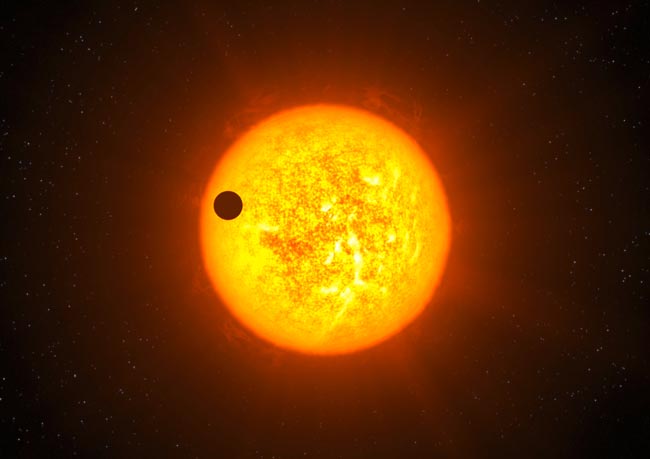Newfound Alien World Resembles Those in Our Solar System

A newly discovered exoplanet is the first such alien world to resemble the planets in our own solar system, researchers announced Wednesday.
The planet, dubbed CoRoT-9b, was found to be about the size of Jupiter and situated at an orbit similar to Mercury, which is the innermost planet in our solar system.
While that seems close, it is much farther away than other gas giant planets found around alien stars with the exoplanet detection method used in the new study. This distance in turn means that CoRoT-9b has a more temperate climate than other gas giants ? so-called "hot Jupiters" ? that can experience radical temperature swings.
The research team also thinks that the planet has an interior composition similar to that of Jupiter and Saturn.
"Like our own giant planets, Jupiter and Saturn, the planet is mostly made of hydrogen and helium," said team member Tristan Guillot of the C?te d'Azure Observatory in Nice, France. "And it may contain up to 20 Earth masses of other elements, including water and rock at high temperatures and pressures."
The newfound planet was discovered by the French space agency CNES's CoRoT satellite, which detected the telltale light signature of the world transiting ? or passing in front of ? its host star from the perspective of Earth. Because it transits in front of its parent star for about eight hours, astronomers are able to learn a good deal about the planet.
"Our analysis has provided more information on CoRoT-9b than for other exoplanets of the same type," said Didier Queloz of the Observatory of the University of Geneva in Switzerland and one of the astronomers on the team that discovered the planet.
Get the Space.com Newsletter
Breaking space news, the latest updates on rocket launches, skywatching events and more!
One thing that makes CoRoT-9b such an important find is that its distance from its parent star is about 10 times larger than any other planet previously discovered with this transiting method.
It also has a low eccentricity orbit, compared to many other exoplanet gas giants discovered so far, which means that its distance from its star doesn't vary wildly like that of other exoplanets. It is that stable distance that allows CoRoT-9b?s more temperate climate, researchers said.
The team that reported the discovery of the planet in the March 18 issue of the journal Nature estimates that CoRoT-9b's surface temperature is somewhere between minus 4 and 360 degrees Fahrenheit (minus 20 and 160 degrees Celsius), with small differences between its day and night sides.
- Images: The Strangest Alien Planets
- Plenty of Solar Systems Like Ours Expected
- Out There: A Strange Zoo of Other Worlds
Join our Space Forums to keep talking space on the latest missions, night sky and more! And if you have a news tip, correction or comment, let us know at: community@space.com.

Andrea Thompson is an associate editor at Scientific American, where she covers sustainability, energy and the environment. Prior to that, she was a senior writer covering climate science at Climate Central and a reporter and editor at Live Science, where she primarily covered Earth science and the environment. She holds a graduate degree in science health and environmental reporting from New York University, as well as a bachelor of science and and masters of science in atmospheric chemistry from the Georgia Institute of Technology.









